tensorflow 实现低分辨率灰度图像分类算法
发布于: 2021 年 03 月 31 日
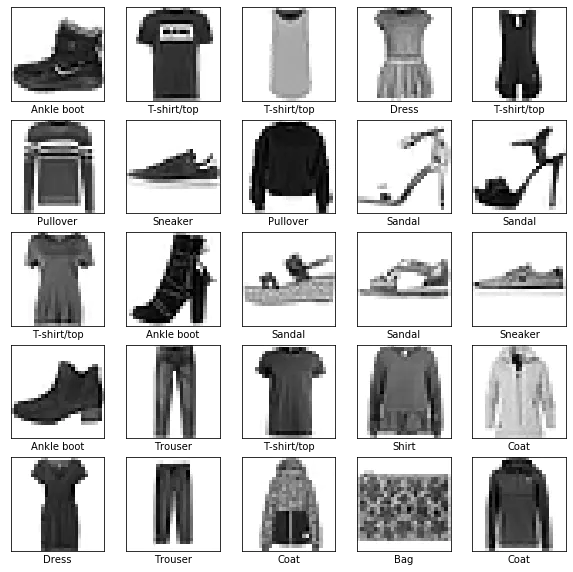
将训练一个神经网络模型,对运动鞋和衬衫等服装图像进行分类。本指南使用 Fashion MNIST 数据集,该数据集包含 10 个类别的 70,000 个灰度图像。这些图像以低分辨率(28x28 像素)展示了单件衣物。Fashion MNIST 旨在临时替代经典 MNIST 数据集,后者常被用作计算机视觉机器学习程序的“Hello, World”。MNIST 数据集包含手写数字(0、1、2 等)的图像,其格式与您将使用的衣物图像的格式相同。本例使用 Fashion MNIST 来实现多样化,因为它比常规 MNIST 更具挑战性。这两个数据集都相对较小,都用于验证某个算法是否按预期工作。对于代码的测试和调试,它们都是很好的起点。在本例中,我们使用 60,000 个图像来训练网络,使用 10,000 个图像来评估网络学习对图像分类的准确率。
代码下载:
https://github.com/wennaz/Deep_Learning/
# TensorFlow and tf.kerasimport tensorflow as tffrom tensorflow import keras
# Helper librariesimport numpy as npimport matplotlib.pyplot as pltfashion_mnist = keras.datasets.fashion_mnist(train_images, train_labels), (test_images, test_labels) = fashion_mnist.load_data()
#图像是 28x28 的 NumPy 数组,像素值介于 0 到 255 之间。标签是整数数组,介于 0 到 9 之间。这些标签对应于图像所代表的服装类:# 标签 类# 0 T恤/上衣# 1 裤子# 2 套头衫# 3 连衣裙# 4 外套# 5 凉鞋# 6 衬衫# 7 运动鞋# 8 包# 9 短靴class_names = ['T-shirt/top', 'Trouser', 'Pullover', 'Dress', 'Coat', 'Sandal', 'Shirt', 'Sneaker', 'Bag', 'Ankle boot']#在训练网络之前,必须对数据进行预处理。如果您检查训练集中的第一个图像,您会看到像素值处于 0 到 255 之间:plt.figure()plt.imshow(train_images[0])plt.colorbar()plt.grid(False)plt.show()#将这些值缩小至 0 到 1 之间,然后将其馈送到神经网络模型。为此,请将这些值除以 255。请务必以相同的方式对训练集和测试集进行预处理:train_images = train_images / 255.0test_images = test_images / 255.0#为了验证数据的格式是否正确,以及您是否已准备好构建和训练网络,让我们显示训练集中的前 25 个图像,并在每个图像下方显示类名称。plt.figure(figsize=(10,10))for i in range(25): plt.subplot(5,5,i+1) plt.xticks([]) plt.yticks([]) plt.grid(False) plt.imshow(train_images[i], cmap=plt.cm.binary) plt.xlabel(class_names[train_labels[i]])plt.show()#构建神经网络需要先配置模型的层,然后再编译模型。model = keras.Sequential([ keras.layers.Flatten(input_shape=(28, 28)), keras.layers.Dense(128, activation='relu'), keras.layers.Dense(10)])model.compile(optimizer='adam', loss=tf.keras.losses.SparseCategoricalCrossentropy(from_logits=True), metrics=['accuracy'])#要开始训练,请调用 model.fit 方法,这样命名是因为该方法会将模型与训练数据进行“拟合”:model.fit(train_images, train_labels, epochs=10)#评估准确率test_loss, test_acc = model.evaluate(test_images, test_labels, verbose=2)print('\nTest accuracy:', test_acc)#在模型经过训练后,您可以使用它对一些图像进行预测。probability_model = tf.keras.Sequential([model, tf.keras.layers.Softmax()])predictions = probability_model.predict(test_images)#可以将其绘制成图表,看看模型对于全部 10 个类的预测。def plot_image(i, predictions_array, true_label, img): predictions_array, true_label, img = predictions_array, true_label[i], img[i] plt.grid(False) plt.xticks([]) plt.yticks([])
plt.imshow(img, cmap=plt.cm.binary)
predicted_label = np.argmax(predictions_array) if predicted_label == true_label: color = 'blue' else: color = 'red'
plt.xlabel("{} {:2.0f}% ({})".format(class_names[predicted_label], 100*np.max(predictions_array), class_names[true_label]), color=color)def plot_value_array(i, predictions_array, true_label): predictions_array, true_label = predictions_array, true_label[i] plt.grid(False) plt.xticks(range(10)) plt.yticks([]) thisplot = plt.bar(range(10), predictions_array, color="#777777") plt.ylim([0, 1]) predicted_label = np.argmax(predictions_array) thisplot[predicted_label].set_color('red') thisplot[true_label].set_color('blue')#我们来看看第 0 个图像、预测结果和预测数组。正确的预测标签为蓝色,错误的预测标签为红色。数字表示预测标签的百分比(总计为 100)。i = 0plt.figure(figsize=(6,3))plt.subplot(1,2,1)plot_image(i, predictions[i], test_labels, test_images)plt.subplot(1,2,2)plot_value_array(i, predictions[i], test_labels)plt.show()#让我们用模型的预测绘制几张图像。请注意,即使置信度很高,模型也可能出错。num_rows = 5
num_cols = 3num_images = num_rows*num_colsplt.figure(figsize=(2*2*num_cols, 2*num_rows))for i in range(num_images): plt.subplot(num_rows, 2*num_cols, 2*i+1) plot_image(i, predictions[i], test_labels, test_images) plt.subplot(num_rows, 2*num_cols, 2*i+2) plot_value_array(i, predictions[i], test_labels)plt.tight_layout()plt.show()
# MIT License## Copyright (c) 2017 François Chollet## Permission is hereby granted, free of charge, to any person obtaining a# copy of this software and associated documentation files (the "Software"),# to deal in the Software without restriction, including without limitation# the rights to use, copy, modify, merge, publish, distribute, sublicense,# and/or sell copies of the Software, and to permit persons to whom the# Software is furnished to do so, subject to the following conditions:## The above copyright notice and this permission notice shall be included in# all copies or substantial portions of the Software.## THE SOFTWARE IS PROVIDED "AS IS", WITHOUT WARRANTY OF ANY KIND, EXPRESS OR# IMPLIED, INCLUDING BUT NOT LIMITED TO THE WARRANTIES OF MERCHANTABILITY,# FITNESS FOR A PARTICULAR PURPOSE AND NONINFRINGEMENT. IN NO EVENT SHALL# THE AUTHORS OR COPYRIGHT HOLDERS BE LIABLE FOR ANY CLAIM, DAMAGES OR OTHER# LIABILITY, WHETHER IN AN ACTION OF CONTRACT, TORT OR OTHERWISE, ARISING# FROM, OUT OF OR IN CONNECTION WITH THE SOFTWARE OR THE USE OR OTHER# DEALINGS IN THE SOFTWARE.复制代码
output1:
output1:
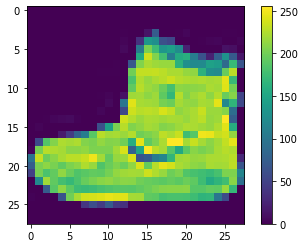
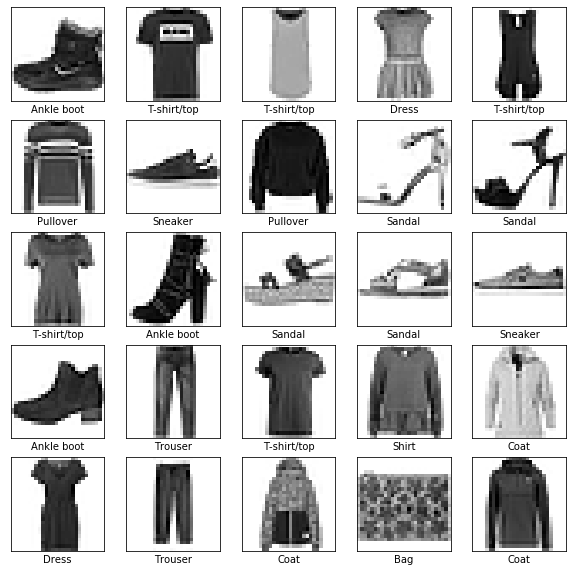
1875/1875 [==============================] - 5s 3ms/step - loss: 0.4947 - accuracy: 0.8247Epoch 2/101875/1875 [==============================] - 5s 3ms/step - loss: 0.3696 - accuracy: 0.8665Epoch 3/101875/1875 [==============================] - 6s 3ms/step - loss: 0.3331 - accuracy: 0.8787Epoch 4/101875/1875 [==============================] - 6s 3ms/step - loss: 0.3118 - accuracy: 0.8868Epoch 5/101875/1875 [==============================] - 6s 3ms/step - loss: 0.2939 - accuracy: 0.8910Epoch 6/101875/1875 [==============================] - 6s 3ms/step - loss: 0.2805 - accuracy: 0.8954Epoch 7/101875/1875 [==============================] - 5s 3ms/step - loss: 0.2668 - accuracy: 0.9017Epoch 8/101875/1875 [==============================] - 6s 3ms/step - loss: 0.2551 - accuracy: 0.9050Epoch 9/101875/1875 [==============================] - 6s 3ms/step - loss: 0.2471 - accuracy: 0.9079Epoch 10/101875/1875 [==============================] - 6s 3ms/step - loss: 0.2388 - accuracy: 0.9098313/313 - 0s - loss: 0.3377 - accuracy: 0.8837
Test accuracy: 0.8837000131607056
复制代码
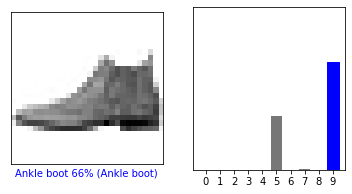
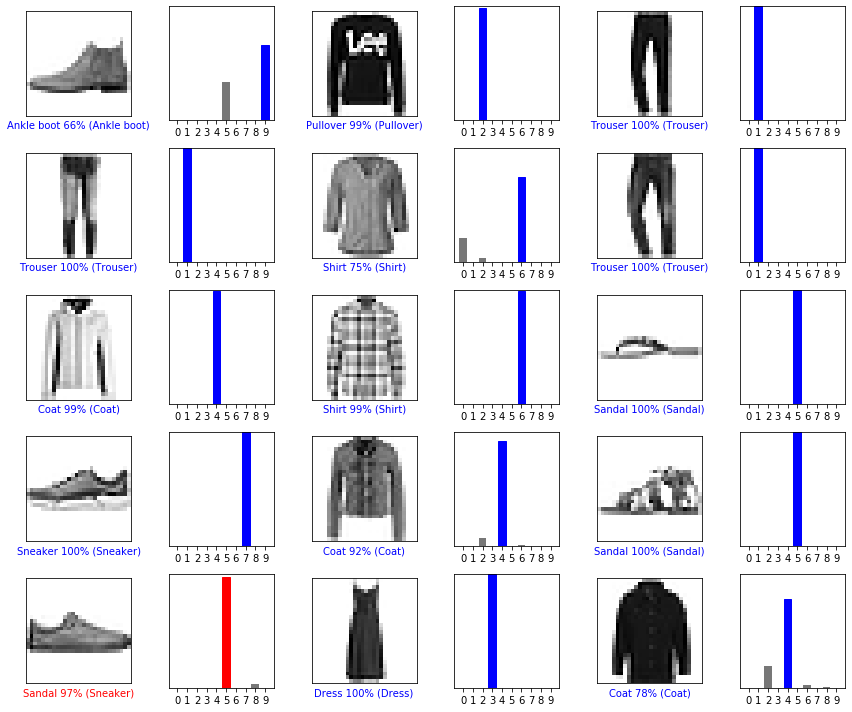
划线
评论
复制
发布于: 2021 年 03 月 31 日阅读数: 8
AI_robot
关注
还未添加个人签名 2021.03.31 加入
Deep Learning从业者












评论